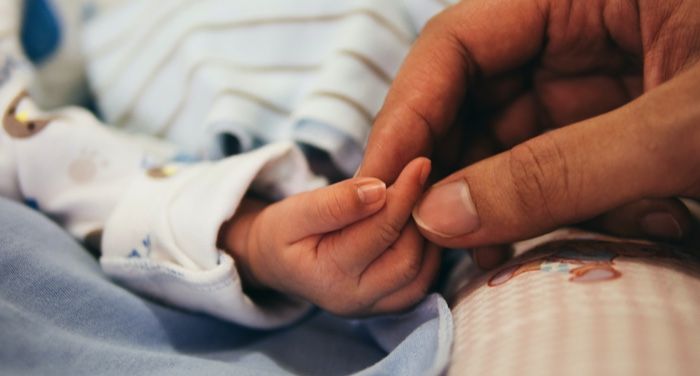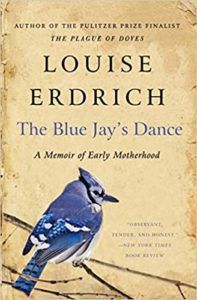“I am an instinctive mother…” As I read these words in Louise Erdrich’s memoir, The Blue Jay’s Dance, a veil was lifted off my eyes. Just like that, I stopped obsessing over schedules and nap times, forgot letting my baby put herself to sleep, and held her little hand as she smiled and dozed off to sleep.
The Blue Jay’s Dance is a memoir of Louise’s and her baby’s first year. There is so much silent strength in her words that I regained some of mine. She speaks of the both physical and mental labor of bringing a baby into this world, and caring for them. She talks about her writing, the time she took out for herself while her tiny infant lay in the crib next to her. I felt appreciative of my hips that had birthed my baby, my back and legs that had carried a load, and my mind that had found the will to write something of its own. Where for months I had been struggling with reconciling my self-worth, I suddenly felt indispensable.
She compares the process of bringing an infant into this world close to a “…self-erasure. In the face of it one’s fat ambitions fall into a dreamlike before that haunts and forces itself into the present with a tough persistence.” Louise made me feel less alone. I remember constantly trying to stay afloat with my personal aspirations as the daily monotony of caring for a baby takes over. I was so convinced that it was monotony. But Louise asked me to slow down. To consider this now my gestation, where I would grow, in a different way.
I also found Braiding Sweetgrass at this time. Robin Wall Kimmerer talks about motherhood, but in a bigger picture. She talks of the relationship of nurture that we have with this Earth. She begins with the story of the Sky Woman, which is the Potawatomi creation story; Sky Woman was the first woman on this Earth, and Kimmerer talks about how she planted and took care of this Earth so her children could thrive in it. “For all of us, becoming indigenous to a place means living as if your children’s future mattered, to take care of the land as if our lives, both material and spiritual, depended on it.“
This got me thinking of how little I focused on what I was doing to make this a better place for my daughter after I am gone. Every piece of paper used in vain, every bag that could be reused was an act of reciprocal care for the Earth that I was ignoring. Kimmerer speaks constantly of finding her way back to Mother Nature. After a particularly difficult time she goes to the lake and finds repose when she didn’t even know she was looking. “I hadn’t realized that I had come to the lake and said feed me, but my empty heart was fed. I had a good mother.” I wanted to have such a deep relationship of gratitude with Mother Nature. Receiving from a force that was way bigger than me.
Kimmerer took my breath away when she mentioned cleaning up a lake for her daughters to swim in, and how she would come across various species of mothers trying to do the same as her to: to provide their children what they need. Her moments of reflection when she sees a bird hiding her nest from her when she goes to find food almost broke my heart. How many nests have we destroyed, how many mothers’ hearts broken? “She gives what we need without being asked. I wonder if she gets tired, old Mother Earth. Or if she too is fed by the giving. ‘Thanks,’ I whispered, ‘for all of this.’”
I hadn’t found my grounding as a mom long enough to think of my actions in the bigger scheme. Thinking of these acts in a bigger context, put my daily acts of mothering into context. Everything was full of purpose. At times when I find myself losing hope, I read these words from Braiding Sweetgrass: “Their life is in their movement, the inhale and the exhale of our shared breath. Our work and our joy is to pass along the gift and to trust that what we put out into the universe will always come back,” and I think this is true in the work of any mother.

